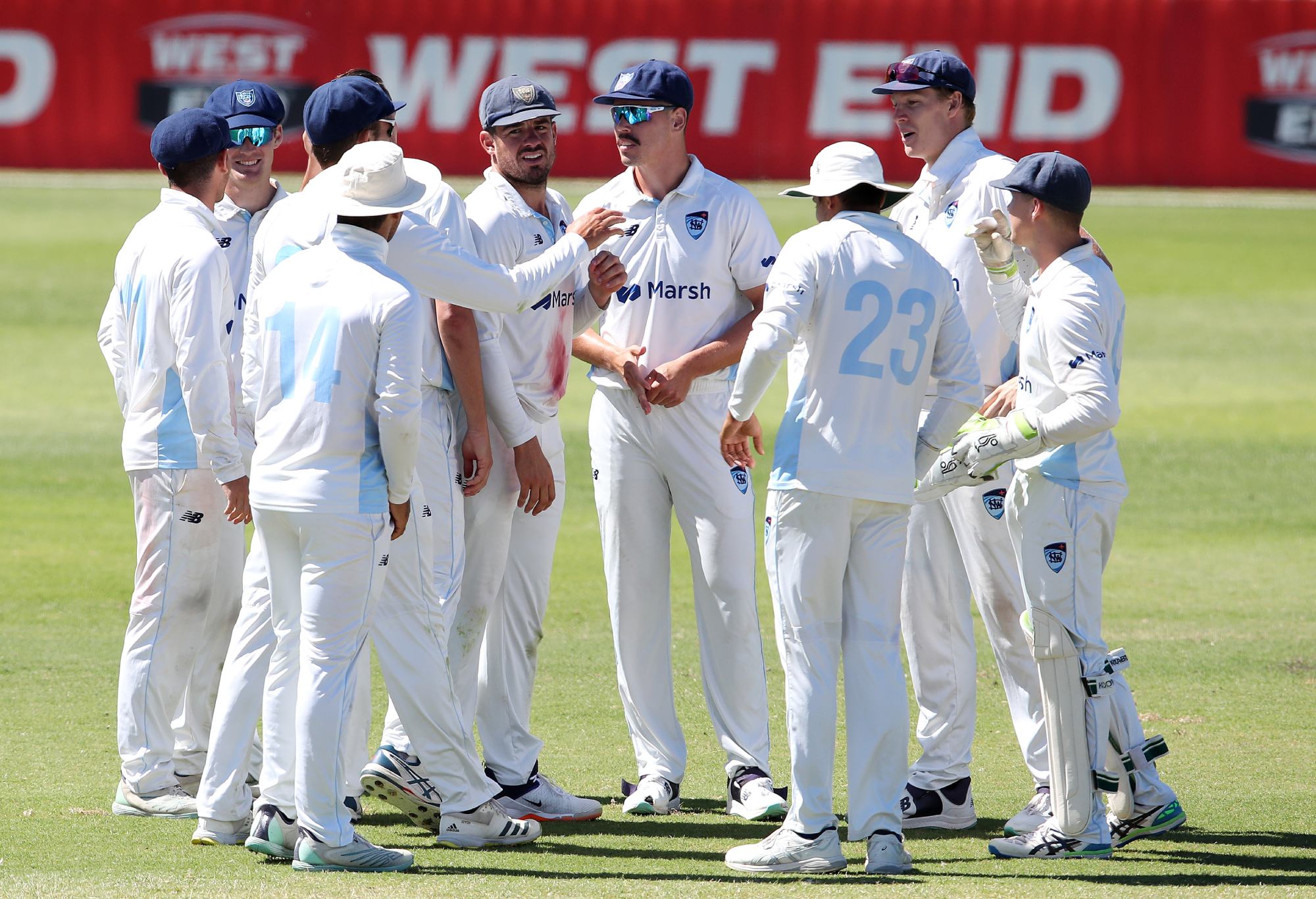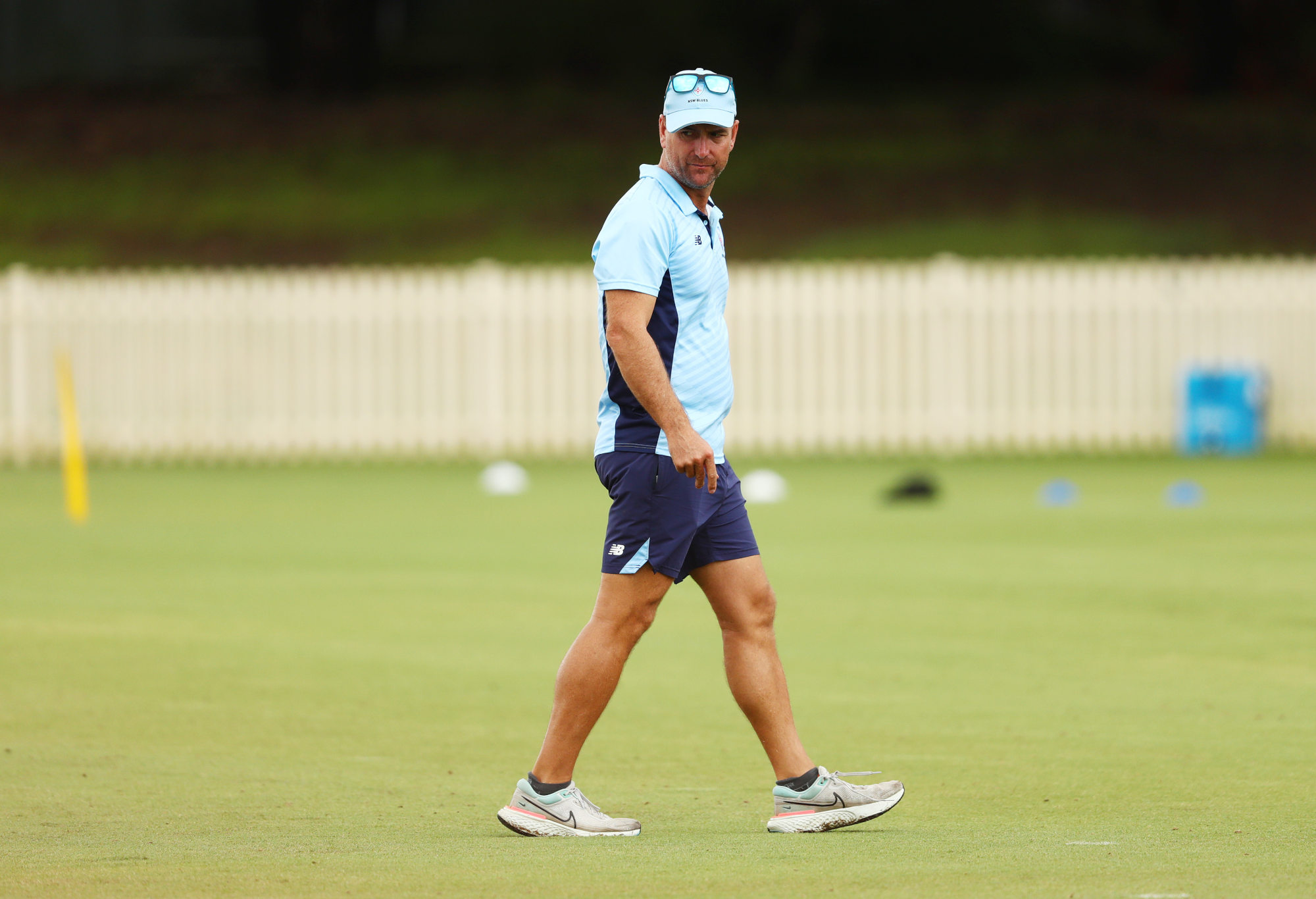Blues Origin predicted team: Maguire set to overhaul squad in search of winning combination
New coach Michael Maguire is considering as many as 50 players for the State of Origin series opener with not even captain James Tedesco…
NSW suffered the humiliation of their first winless season in 84 years on Friday in Adelaide and there is nothing that can paper over the cracks that have reduced Australian cricket’s perennial powerhouse to rubble.
The Blues need a total rebuild after their worst summer on record after also finishing equal last with Tasmania in the Marsh Cup 50-over tournament (ahead of the Tigers on net run rate if you want to be kind) with just two wins from seven matches.
NSW won just two of seven Shield outings last season – a steep decline after they were champions in 2019-20 and runners-up the following year.
They punted coach Phil Jaques before November was out, installing Greg Shipperd as the interim coach and are yet to make a decision on whether the veteran mentor will remain at the helm next season.
CLICK HERE for a seven-day free trial to watch cricket on KAYO
The Blues had a golden opportunity to register their maiden win with their last chance at Karen Rolton Oval against South Australia.

NSW had to settle for a draw against South Australia at Karen Rolton Oval. (Photo by Sarah Reed/Getty Images)
But after claiming a first innings lead and setting the Redbacks a target of 386 from 87 overs, the home side finished the final day on 7-290 to hold on for a draw and consign NSW to their first season without a victory since 1938-39 and just their second winless season ever since the inaugural summer of 1892-93.
For so long, the strength of NSW has been powering Australia’s cricket team. Of the past 10 captains of the men’s Test team, eight have been Blues or originally from the state with Tasmanian duo Ricky Ponting and Tim Paine breaking the sequence.
It has been a cause of angst for players, officials and fans from other states, that NSW has dominated selection in the national team for decades.
The collective gripe is best reflected in the late, great David Hookes’ famous comment two decades ago that “when they give out the baggy blue cap in NSW, they give you a baggy green cap in a brown paper bag as well to save making two presentations”.
But that representation from Australia’s most populous state at international level is about to drop away dramatically.
The six regular Test players from NSW are either on the way out or entering the twilight stages of their career – David Warner (36), Steve Smith (33), Nathan Lyon (35), Mitchell Starc (33), Josh Hazlewood (32) and captain Pat Cummins (29).
Hazlewood is the most recent of that group to break into the Test ranks but since his debut against India at the Gabba in 2014, NSW have produced just two of the past 26 baggy green cap recipients – Nic Maddinson, who played three matches in 2016, and Kurtis Patterson, who scored a ton in one of his two appearances against Sri Lanka four years ago.
Wicketkeeper Peter Nevill was also picked to play for Australia during that timeframe while playing for the Blues but he came through the Victorian system before heading north.
Maddinson has since switched to Victoria, Patterson was the Blues’ captain this season but his form slump led to him being dropped for the final game against South Australia while Nevill retired last year.
The Blue tinge at Test level appears certain to fade in the next few years.
With Western Australia a home Shield final win away from defending all three domestic trophies, all-rounder Cameron Green should have plenty of state comrades alongside him soon enough at Test level like Cameron Bancroft, Aaron Hardie, Josh Inglis, Teague Wyllie and Jhye Richardson.
When the national selectors announced a 14-man Australia A squad to tour New Zealand next month to give fringe Ashes candidates a chance to show their wares on seaming wickets with an English Dukes ball, there was not one NSW player selected.
Tasmanian opener Tim Ward is a former NSW Second XI representative but he went south in search of an opportunity and was rewarded.
This has been another problem at the Blues in recent years – players such as Ward, South Australian quick Nathan McAndrew, Tasmanian duo Jake Doran and Nathan Ellis have succeeded elsewhere, raising questions about whether NSW are identifying the right players to retain.
The Blues have mostly fielded a team this season mixed with a few veterans like Moises Henriques, Sean Abbott and Daniel Hughes along with players who have been in the junior pathways since their teens but are yet to get established at first-class level.

Pat Cummins, Mitchell Starc, Josh Hazlewood and Nathan Lyon. (Photo by Mark Metcalfe – CA/Cricket Australia via Getty Images)
Using the excuse of the Test stars not being able to play in the Shield holds no water.
In the first couple of decades since the turn of the century, the Blues won the competition five times even when the likes of the Waugh twins, Glenn McGrath, Michael Clarke, Brett Lee and the six current stalwarts were perennial Test representatives.
A lack of resources is not the reason either – the Blues moved to their new base at Silverwater in Sydney’s west last year complete with a multitude of indoor and outdoor nets, a picturesque ground, gymnasium and all the sports science facilities the modern-day athlete requires.
But the current crop of rising stars have not delivered.
Jason Sangha, who became the youngest player to receive a NSW rookie contract when he was just 16 in 2016, has captained his state at times over the past 12 months when he was as young as 22 despite but his form with the bat has been modest – averaging just 28.14 with a top score of 54 from 15 innings.
The selectors have given extended runs to Blake Nikitaras (240 runs at 18.46) and Matthew Gilkes (329 at 23.5) but they have also struggled to repay that faith with runs of their own.
NSW have always prided themselves on being a state that produces Test players while also succeeding in the domestic competition but at the moment it appears to be doing neither.
Former Test seamer Stuart Clark, an old Bluebagger who still keeps an eye on the selection scene as a director for his club Sutherland, has been an outspoken critic of Cricket NSW prioritising the players chosen in their elite pathways from a young age over established grade cricketers.
Another old Blues quick, Trent Copeland – who retired recently – echoed those sentiments last week, appropriately enough on The Grade Cricketer podcast.

Phil Jaques. (Photo by Mark Metcalfe/Getty Images)
He said there was an abundance of players at club level who become disenchanted by younger prospects in the elite pathways system getting preferential treatment at the selection table.
“When I first started grade cricket and was pushing into (NSW) Second XI, I felt an animosity around, like it was a heated battle,” he said.
“There were endless amounts of 28-33-year-old players at the level just below Shield cricket that were pushing everyone to be better. And it was legitimately a thrash and bash of the best who could possibly play the next game of Shield cricket.
“In my career, upwards of nearly 15 years, it’s very much been a focus on the next 19-year-old who could play 10 years of first-class and Test cricket, as opposed to who are currently our best cricketers. It’s an overarching generalisation about the system but it’s certainly affected the amount of guys that are in that age bracket of 25-31 who just give the game away.”
Copeland said cricket’s best batters hit their peak in their late 20s but “we’ve already ruled out those guys if they haven’t looked like the next Steve Smith and also averaged 70 at the lower level”.
And he said states have fallen into the trap of “attribute-based” selections for fast bowlers – prioritising tall speedsters with athletic prowess ahead of those who may not be physically imposing but get the job done, as he did with his seamers netting 344 wickets at 26.3 for the Blues to be third all time behind past legends Geoff Lawson (367) and Greg Matthews (363).
It’s a fine balance for NSW, or any state for that matter, to be picking players who they think will develop into Australian representatives but also fielding a team capable of competing for domestic titles.
They’ve hit rock bottom after placing their trust in the system but the system is broken and it’s time for a complete overhaul.
Due to a high number of comments that contravene our policies, and the huge workload required in dealing with them, we have decided to restrict comments to registered users who are signed in at this stage. This means comments by guests should no longer appear. The sign up process is simple and easy. Thanks to our registered users for continuing to contribute to the site and we hope that removing some of the guest accounts leads to a better experience.